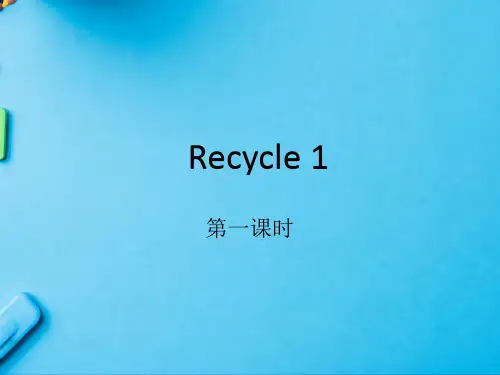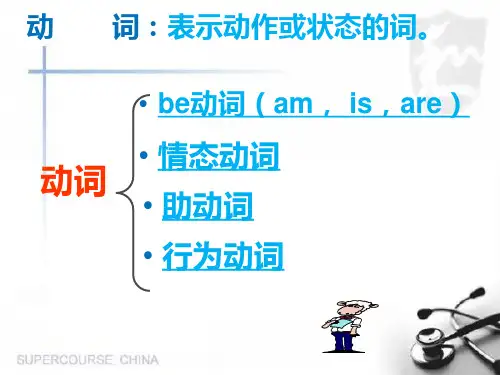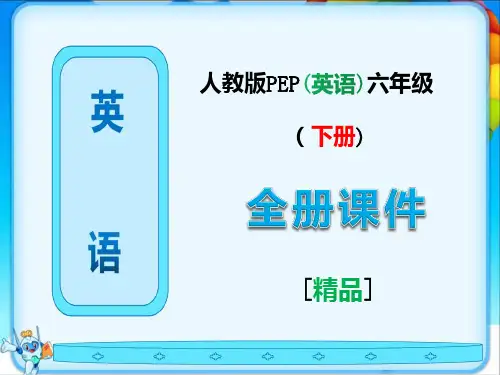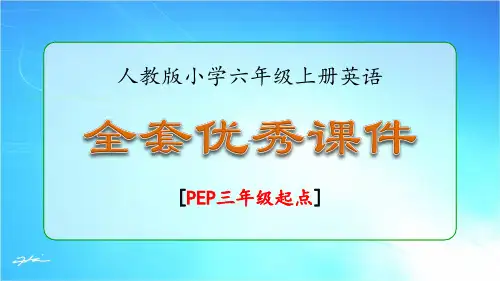- 1、下载文档前请自行甄别文档内容的完整性,平台不提供额外的编辑、内容补充、找答案等附加服务。
- 2、"仅部分预览"的文档,不可在线预览部分如存在完整性等问题,可反馈申请退款(可完整预览的文档不适用该条件!)。
- 3、如文档侵犯您的权益,请联系客服反馈,我们会尽快为您处理(人工客服工作时间:9:00-18:30)。
第一课至第六课的知识点的梳理
Lesson 4
Lesson 1
Lesson 2
Lesson 5
Lesson 3
Lesson 6
Do you always have lunch at twelve?
Lesson1
能够运用主题句型 Do you always have
lunch at twelve?进行交际。
动词单三变化规则
1. 一般在动词之后直接加s,在清辅音后发音为 [s], 在浊辅音及元音后发音为 [z] 例如:stop-stops [s] ; make-makes [s] ②read-reads [z] ; play-plays [z] 2. 以sh/ch/s/x结尾的词+es, 发音为[iz] 例如:teach-teaches [iz]; watch- watches [iz] 3. 以辅音字母+y结尾的, 把y变成i, +es,读作 [iz]
一般现在时态
定义:一般现在时表示现在经常反复发生的动作、 存在的状态或习惯性的动作的时态。 I often go to school by bike. It is hot today. I always have lunch at twelve. 一般现在时的标志 标志词(时间状语):always, uausally, every week (day, year, month…), once a week, sometimes, on Sunday, often, never, hardly...
例如:study—studies 4.辅音字母+o结尾的+es,读作[z] 例如:go—goes[z] do--does[z] 下面几个动词变为单数时,原词的元音部 分的发音发生了较大的变化,请注意记忆。 如: 1、do [du:]-does [dʌz]
2、say [sei]-says [sez] 3 、have-has
一般现在时句型结构:
肯定句:主语(除单三人称外所有人称)+实义 动词+其它. 否定句:主语+don’t +动词原形+其它. 疑问句: Do +主语+动词原形+其它? 回答:Yes,主语+do. No, 主语+don’t. 注意:当主语为单数第三人称时句型结构: 肯定句: 主语+V单三+其它. 否定句: 主语+doesn’t +V原+其它. 疑问句: Does +主语+V原+其它? 回答: Yes ,主语+does. No,主语+doesn’t.
小学六年级英语 知识要点专题讲座
八一中心小学 刘盛蓉
• 教材分析及目标
本教材是六年级上册用书,有12课,每个单元分三部分,其中 每课有let’s talk let’s learn let’s sing let’s practise四个环节
1、能按四会、三会的要求掌握所学单词。 2、能按四会要求掌握每课所学句型。 3、掌握每一课重要词汇
常见国家及首都 China---Bei Jing England---London France---Paris
America(USA)---New York Russia---Moscow Japan---Tokyo
come from=be from来自于… too,也,通常用在肯定句末尾 look for 寻找 take a seat坐下==sit down type(动词)---typist(名词) by the way顺便问一下 after three months=in three months三个月后 all right=O.K.好吧
熟读背诵 let’s talk
复习常见疑问词 What什么 Who谁 Whose谁的 Which哪一个 When什么时What time 时间(具体几点几分) Why原因,为什么Where地点,哪里How 方式, 怎样 词汇加油站: “how+形容词、副词”引导的特殊疑问词组: How many/much 多少Haw far 多 远Haw long 多久(询问时间)/多长(询问距离)How soon 多快(询问时 间)How old 多大How often 多久(询问频率) 习题:句子加工厂 My name is Rose. (对划线部分提问) I live in New York. (对划线部分提问) She is my best friend. (对划线部分提问) She often walks to school. (对划线部分提问) My mom usually makes breakfast at 8:00. (对划线部分提问) That’s her book. (对划线部分提问) Where are you from?(同义句) She always gets up before six. (对划线部分提问) Lucy often does homework on Sunday. (对划线部分提问) I usually have milk and bread for breakfast. (对划线部分提问)
4、能使用日常交际用语,活用四会句型,进行简单的交流, 做 到大胆开口,发音正确。
5、能在图片、手势、情境等非语言提示的帮助下,听懂清晰 的话语和录音。
• 教学方法
创设各种情境,鼓励用英语交谈,频繁的让学生参 与小组活动,并要求他们自编英语对话,通过游戏、 歌曲和角色表演等,使学生用英语交流。每课结束 后,放录音听写,及练习学生的听力也为学生的笔 试打下基础。
各人称复数
We/You/Th We/You/They ey are are not teacher teachers. s.
Yes, you/we/they are. we/you/the No, you/we/they aren’ y teachers?
词汇集中营 It’s time to do sth. =It’s time for sth. 该做。。。的时候到了 wake up醒来 have lunch 吃午饭 do morning exercises做早操 have no time没有时间 either,也… 通常用在否定句末尾 make breakfast做早饭 there’s something wrong with … …出毛病了
人称,数 形式
I am not a 第一人称单数 I am a teacher. teacher.
You aren’t a 第二人称单数 You are a teacher. teacher.
第三人称单数 He/She is a He/She is not a teacher. teacher. It is Mary. It isn’t Mary.
重点语句
Does she always come here? A barking dog doesn’t bite. take a walk=go for a walk散步orts做运动 put on…穿(戴上)… ask sb. To do sth.叫某人做某事 be afraid of …害怕… the old saying古老的谚语 go out with sb.和某人一起出去 begin=start开始
一般现在时 一般现在时通常表示经常发生的动作或存 在的状态。be动词的一般现在时
肯定式 否定式 疑问式 简略回答 Am I a teacher? Yes, you are. No, you aren’t. Are you a teacher? Is he/she a teacher? Is it Mary? Are Yes, I am. No, I’ not. Yes, he/she is. No, he/she isn’t. Yes, it is . No, it isn’t.
Lesson3 where do you live?
本节课继续学习一般现在时态,重点学习 这一时态的特殊疑问句形式及相关答语, 包括第三人称单数形式。 熟练掌握新单词和词组 能在实际情景中运用句型:“where do you come form” I come from···where do you live? I live in· · · 能听懂会说句子 Where does she come from?She come from....并在语境中进行交 际。
学习一般现在时
词汇集中营
教学重点
1. 2. 3. 4. 5.
问时间的句型:What time is it?或 What’s the time? 固定句型:It’s time for...“该做/干…了。或“到…的时 词组:have lunch/breakfast/supper; 句子:What ab 具体几点几分前用介词at. 交际用语:—— Do you always have lunch at twelve —— Yes,I do./ No, I don’t. —— What do you have for breakfast? —— I usually have milk and bread . 6. 频度副词:sometimes, often, usually, always;其用法 也可放在句首;放在句中时,要置于实义动词之前,be动词
Lesson 2 Does she always come here?
掌握本课短语词汇 掌握第三人称动词改变
掌握一般现在时句型结构
重点单词讲解
1. put on 表示穿戴的动作。 wear 是“穿着”,“戴着”的意思,可用 于穿衣、穿鞋、戴帽子,戴手套、佩戴首饰 等,强调状态。 Eg: Please put on your hat . He wears his hat. 2. be afraid of 害怕某物、某人…. I’m afraid of the dog. He’s afraid of the tiger.








